Interviews & Profiles
Leon McCarron: Up the Rio Santa Cruz
Jan 30, 2015
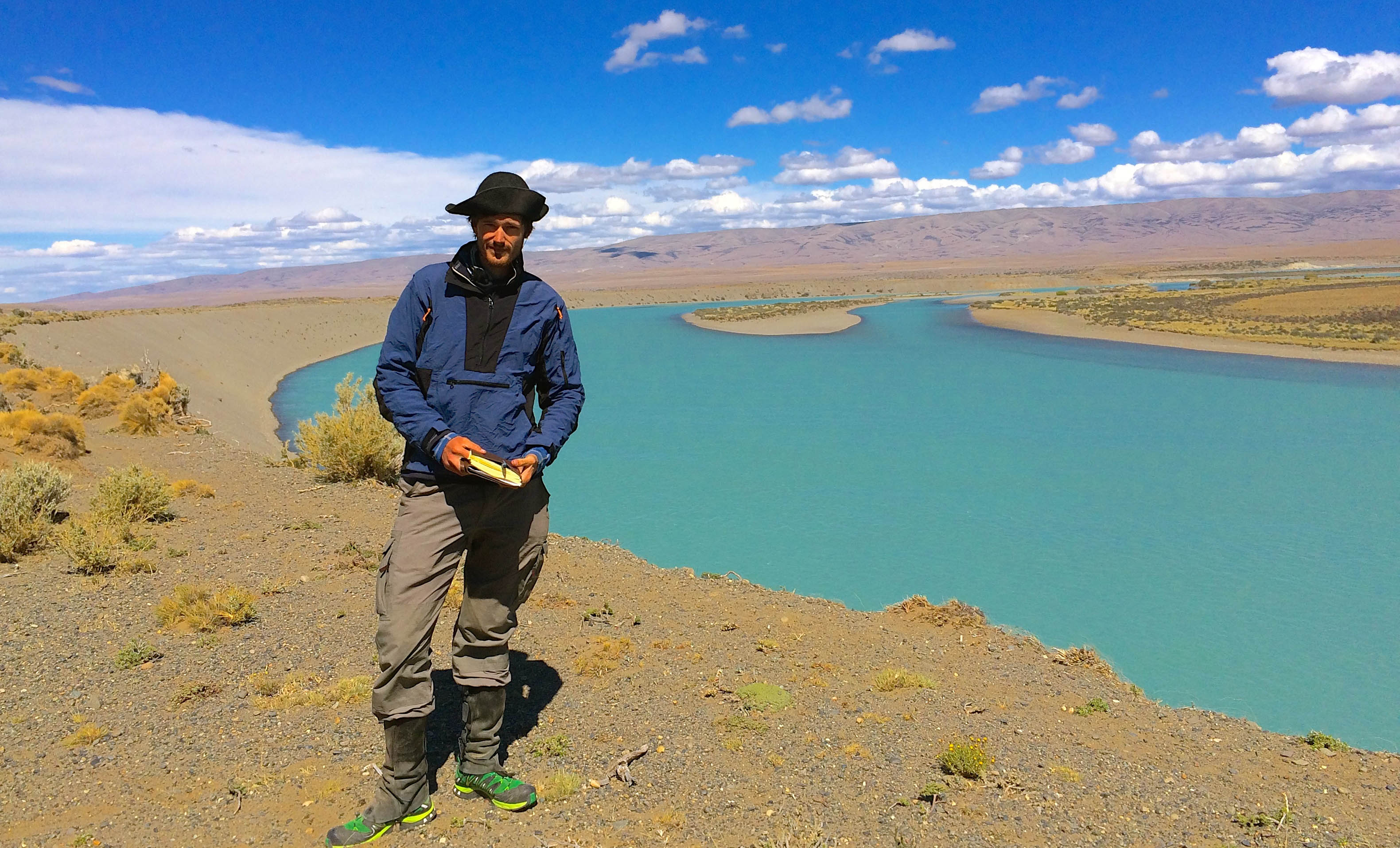
In November of 2014, Leon McCarron, impressed with thegear we provided for his 2013 Empty Quarter expedition with Alastair Humphries, came to us with a hurried proposal for a new expedition. The goal: to travel the Rio Santa Cruz, in Argentinean Patagonia, from sea to source on horseback. Along the way, he would be following in the footsteps of Charles Darwin and the captain of the now famous HMS Beagle, Robert Fitz Roy. Beyond the famous names that had come before, the Santa Cruz also presented a new challenge that provided the time crunch: construction on two large hydro-electric dams that was slated to begin in January of 2015. Not only did Leon have but a month to plan and complete his journey, but he would also likely be the last adventurer to walk the whole route as Darwin did, undammed.
Leon’s crew consisted of him, his friend Tom Allen, an accomplished adventure cyclist with virtually no experience on horseback, and Jose Argento, a local guide who Leon dubbed their “Argentinean Horse Whisperer.” Together, with six horses, the three men trekked across the expansive and barren Patagonian Steppe, braving harsh wind, solitude, and what Darwin dubbed a “dreary landscape.”
***
How did this expedition come to your attention?
I’d been reading a bit about Patagonia because I was eager to get down there. I’d been trolling through news articles looking for a hint of a story to see if I could come up with something. I heard about the Rio Santa Cruz first and starting reading about Darwin and Fitz Roy. Then I heard about the Dams and realized that this wasn’t just a really good story it was a really important story. If someone didn’t get down there and document the trip it wouldn’t never happen. It was a good bit of luck I guess.
What especially piqued your interest?
Not to dodge the question, but it was the combination of both really. Following the historical journey was going to be fantastic, and it was amazing to chart a journey from 180 years ago in this day and age, but it was also the fact that this place was about to be destroyed and really made me feel like I had to go then. It was a perfect storm really.
As you planned for the trip, what were you worried about, as far as the terrain and the plan for the expedition?
I knew it was going to be pretty remote, long stretches without seeing anyone at all. I hadn’t really had any experience traveling on horseback, so that was a knew thing altogether. Those were the worries really – how would Tom and I do traveling long distances on horseback and how would we get out of the remote area if something went wrong. That’s always the worry – it was the main worry in the Empty Quarter as well. If everything goes well it’s fine, it’s remote, it’s wilderness, you prepare for that but if something happens and someone breaks a leg – how many days are you from the closest road.
What were your first impressions of the Rio Santa Cruz?
It’s an incredible place. People talk about it as if it’s the end of the world. Travel writers like to mythologize it a bit like it’s the tip of the known universe. It does feel a bit like that; it’s so wide and empty, and you get the sensation of being out there, alone, in the middle of nowhere. It’s a lot like Montana, where the sky feels twice as big as it does anywhere else. You travel ten minutes out of town and you feel like there’s no one else in the world. It’s a pretty intimidating landscape. Beautiful, but intimidating.
How did Darwin’s journey along the same route go? What did it feel like to be following his footsteps?
It was really cool to follow Darwin and Fitz Roy. I love the idea of following someone else’s journey. Their trip was infinitely harder than ours was because they were traveling 180 years ago and it was a proper adventure. They didn’t know what was around the next bend – they didn’t even know if there was a next bend. In that respect, we couldn’t really compare our journeys, but we could still chart where we were. Fitz Roy left some coordinates and they both had really great descriptions so we could pinpoint some spots, and we had sketches from the artist Conrad Martin so we were able to find the exact spots where they were and really visualize what it must have been like to be the first ever explorer to arrive an an unknown land. That added so much value to the trip. It is a cool area of wilderness that would be great to travel on its own, but to really match that up gives it a whole other layer.
Did you agree at first with what Darwin wrote in his journal about the "dreary landscape" of the Santa Cruz plain?
I enjoyed it probably a lot more than Darwin did initially, but that’s probably because he’d been stuck on a boat traveling around South America for a couple of years at that point, so he’d seen a lot of this same old crap. He got off the boat and saw another dull, steppe-like landscape, and he was pretty jaded with that kind of thing by the time he reached the Santa Cruz, whereas for me I’d just come from the UK, and it’s a world of difference, going from winter to summer and all that good stuff – so I loved it immediately. One thing is interesting is Darwin and Fitz Roy both talked about how monotonous a landscape it is, but Darwin, as his diary progresses, you really get this sense that he began to appreciate it, notice all the little quirks and idiosyncrasies that every step of the river had – and by the end he quite enjoyed himself. I love Steppe and Desert landscapes – I think there’s something really poignant in them.
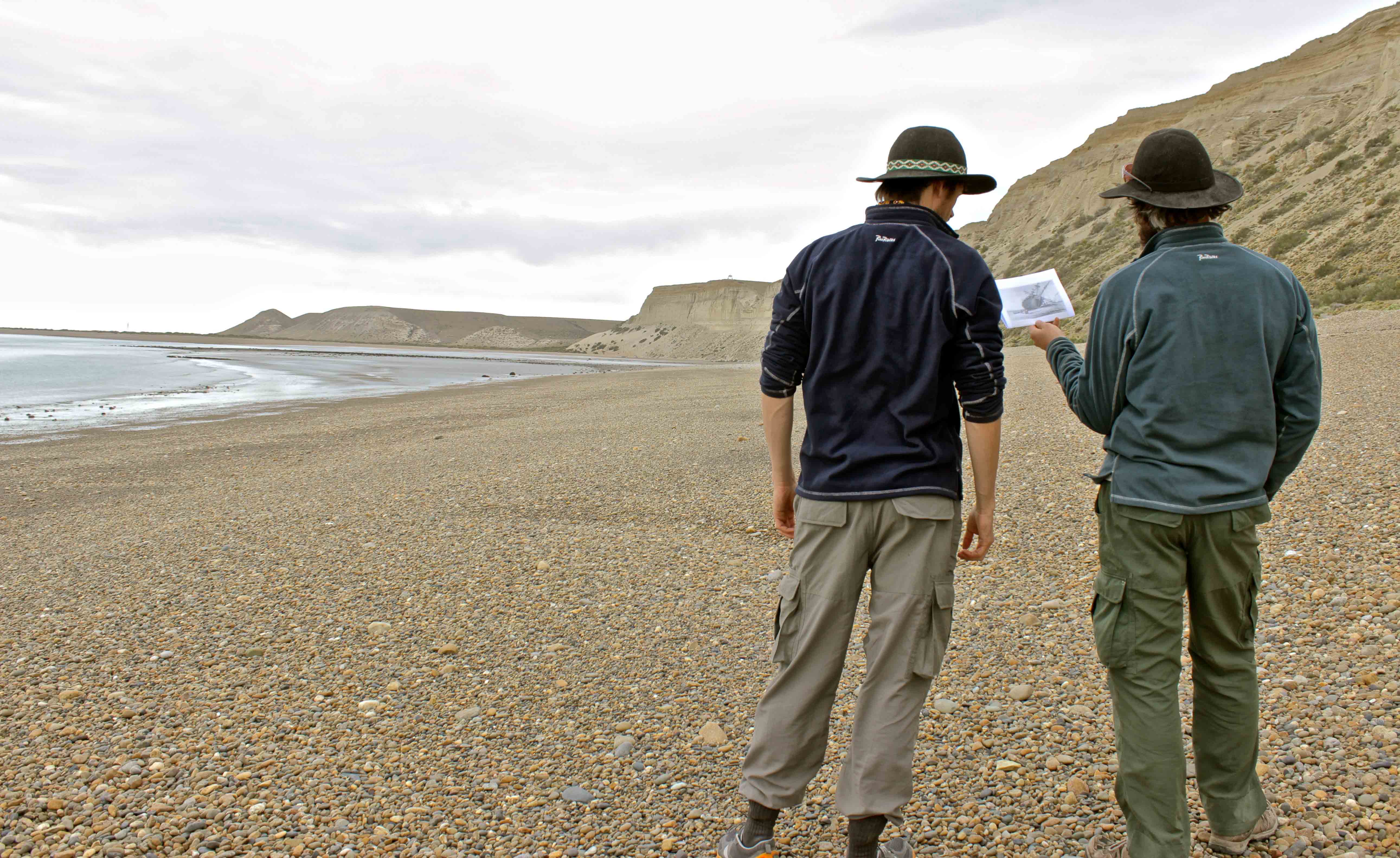
Was it easy to follow Darwin’s tracks?
The idea initially was just to use them as an inspiration, to use the spirit of their adventure as a motivator for our own trip. We ended up doing a lot more than that. Around 5 sections of the trip we matched up the sketches that they took with the exact point, and that’s an incredible feeling to do that. We camped at the same place as them a couple of times. They had a few places that they referred to really specifically: a place called Indian Pass, where they thought indigenous people could cross the river and it’s really striking when you get to it on the river, and another place called Basalt Glen, a really fertile, verdant side valley off the river, where we stopped and did some filming. By the end of the trip, once or twice a day we were rereading through the diaries and trying to match stuff up. It became a huge part of the trip.
How’d they get the boat off the beach?
Man, this is the thing about that day and age. They knew so much about everything. Even though this was the first time they ever arrived there, they studied the tides until they realized what the perfect amount of time was to bring it in, leave it there, and let the tide retreat out on its side, then they had about 9 hours to do repairs, repaired the keel super quick and waited for the tide to come back in and carry it out. They didn’t have to do anything except be smart. That must have been a pretty intense nine hours.
What are some of the most interesting takeaways between comparing Darwin and Fitz Roys journals and your own experiences on the Steppe?
The major difference I took away was just the idea of what progress and advancement were compared to ours. They were explorers on the front line back then, just trying to see what was around the next corner, understand the landscape, make contact with the indigenous people, and that was progress in the World in 1830, to find these wilderness areas and explore them. In this day and age progress is kind of the opposite, it’s taking the wild areas that we have and instead of opening them up and championing them for being beautiful, it’s closing them down and putting in things that help facilitate a more urban lifestyle. Without really placing any judgment on what I think of that, it was a big realization I had when I was on the trip.
What did you think of the landscape after you were immersed in it? Impressive or depressing?
It’s just a real privilege to be able to do something like this. I’ve been really luck on all the adventures I’ve been on, and any day you can spend out in the wilderness is a total privilege. Mostly that was my sensation – how lucky am I to be on this river in the middle of the Steppe and enjoying it? Secondly, what a cool ecosystem it has. It’s such a harsh environment, and when you look at it, when you first arrive, it seems like nothings alive, it’s all one color. No big trees. When you get a little closer you realize there are these hardy bushes surviving, Guanacos running around, armadillos, foxes, there’s flamingos, condors flying overhead, pumas in the high grounds, wild horses. All of this stuff is alive. That’s what blew me away, is every day we saw something else that managed to survive and thrive in the landscape, which makes it ultimately worthwhile to be there.
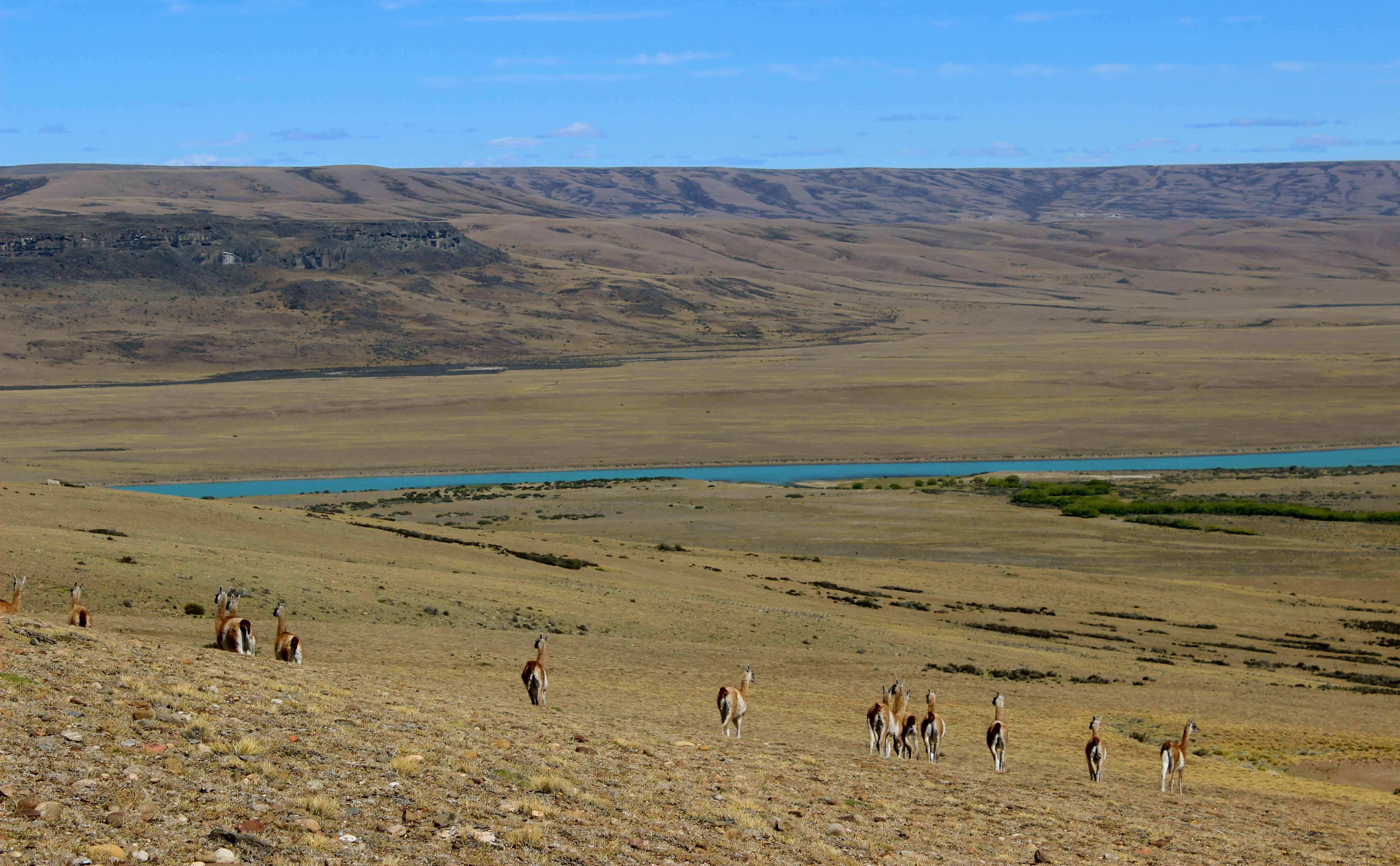
How populated was the area? What were the communities like? How often did you come into contact with humans? Livestock?
Not really any communities. The way a lot of Patagonia works is that when the settlers first arrived, they started setting up “Estancias,” these big ranches. Each of them would be huge, they have 70,000-100,000 hectares each and they would keep tons and tons of sheep. 30-40 years ago, the bottom fell out of the wool trade market and the whole thing started to fall apart, so these estancias, that were pretty thriving at one point, are starting to run dry. You can’t really make any money in it anymore. So as we started the journey, there was a small town at the mouth of the river, and between there and el Calafate which is the city at the end of the river, we saw no towns, no settlements, but we probably came across 7 or 8 estancias, and only two of them were still inhabitated. Partly because there isn’t a living to be made in wool anymore and partly because of the dams – all that land by the river is going to be underwater. The longest we went was about 7 days without seeing any other people and then we’d come across an estancia with someone who was like 200 years old who was looking after this crumbling old mansion in the middle of the steppe, and then we’d leave him to it and travel another 4-5 days without seeing anyone. It’s remote and empty out there.
They are pretty much out there on their own. There are some really basic tracks. From the main city it’s probably 6 or 7 hours on a dirt road and then another 6 or 7 hours off the dirt road on a real primitive trail. It’s pretty out there.
I want to talk about the sites of the upcoming Dams – were they easily identifiable? What kind of areas are they located in?
It was definitely really easy to see them. Partly that was because we had our maps and coordinates and so on, but as soon as we got there we knew. There has been a little pre-construction work done, trails cleared on either side as surveyors have come down, so the hillside looks a little bit scarred where it is going to be.
I guess it generally makes sense to build dams where there are two cliffs opposing each other, and you can just build it straight across. The Santa Cruz doesn’t really work like that, it’s a pretty wide open valley, so the first dam site especially I was pretty surprised because it felt really low and was an odd place to try to build a dam. The second one felt a little bit more like a cliff, a little more standardized, but both are going to require a huge amount of work and probably a good 10km of building to get across the valley.
When is construction supposed to start?
It’s a muddy world down there, what’s actually going on. Construction should be starting right now, it was meant to start this month. There’s a group of people who are opposing the dams and they are led by a civil engineer based in Buenos Aires, who has been down to the river and done some studies and has tried to show that these dams could have a really negative impact on the ecosystem and the glacier on the far end. He and his group of people have put together a motion and taken it to the Argentinian Supreme Court. They found out about a week ago that their case will be heard in February, so the construction can’t begin legally until after that case has been heard by the Supreme Court.
Whether or not that means it won’t actually begin or not I don’t know, because the law doesn’t seem to mean much in Argentina. This whole project, it’s completely illegal to build a dam without an impact study, where you analyze the river and assess what the potential impact will be of building the dam to the environment and everything else around it, and this is going forward without that being done, simply because the government thought “well we don’t really care what happens, we just want to build it anyway.” So I think if they’re prepared to go ahead without something like that, they’re probably prepared to go ahead before the case is heard by the Supreme Court.
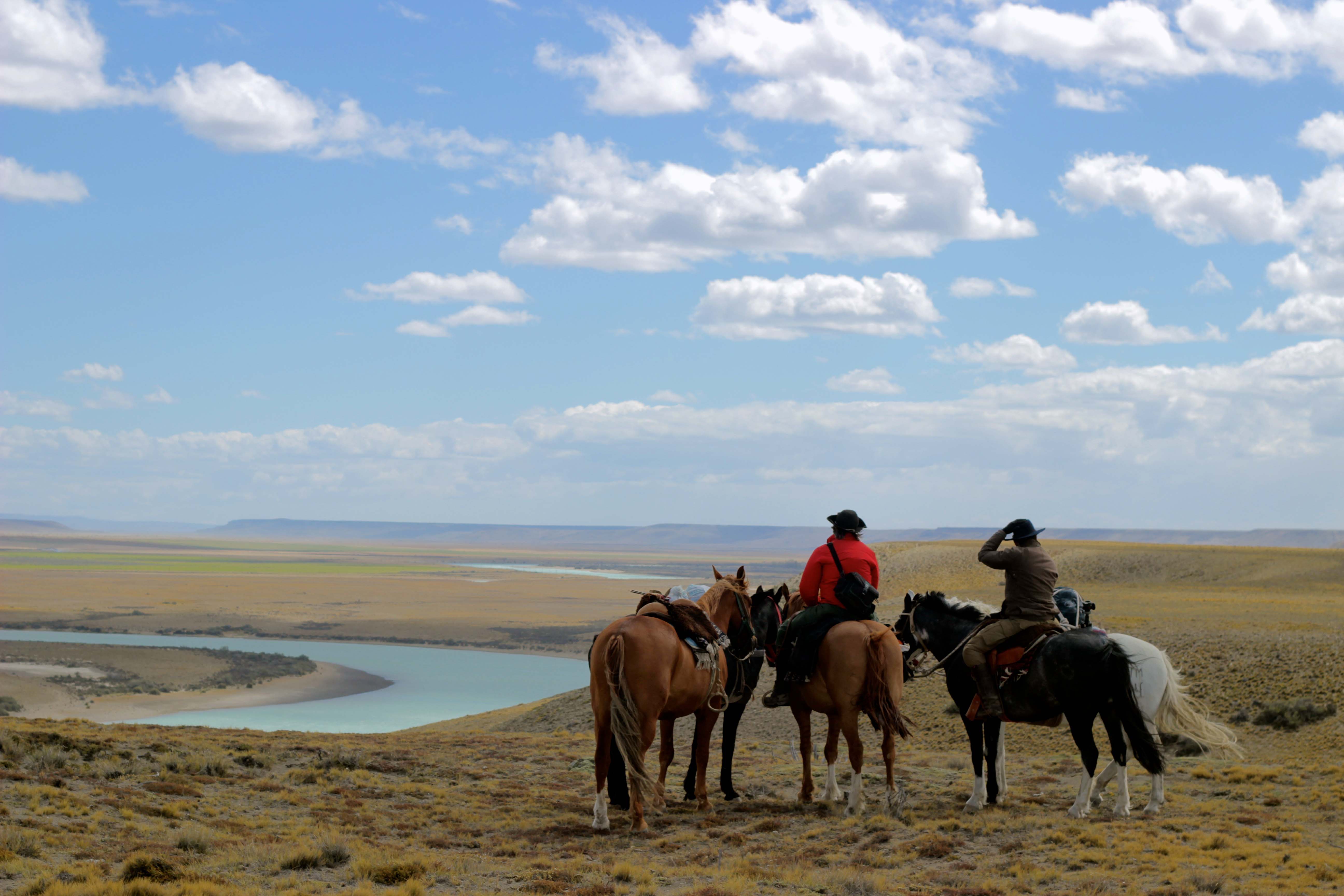
Based on what you saw, how do you think the Dam’s will impact the landscape and the ecosystem?
That part of the equation is pretty easy to see because they will totally decimate the landscape. Over a half of the river will become reservoirs. The first dam will raise the water level by about 80 meters and the lake behind will be between 80-100km long, and the second one even longer than that, which will come back up to Lake Argentina, the source of the river. It’s going to be unrecognizable. The ecosystem is going to suffer a huge amount because all of the guanacos and other lifeforms that live down in that valley are going to have to move out. the fish species in the river are also part of that interdependent chain. The big worry is if the water level is raised beyond a certain point, it could affect the level of Lake Argentina, which could affect the Moreno glacier at the far end of the lake, which is one of Argentina’s national symbols and one of the coolest things on Earth. That’s the big worry, but what is a fact is that part of the Steppe will be changed forever.
How will it affect the native fish that call the Santa Cruz home?
There’s not a lot of native species – there’s about 5, and I’m not sure anybody cares too much. We met a scientist who specializes in the fish species, and she cares, but even she admitted that its pretty hard to get a whole country to care about 5 species of fish that are relatively unknown. There are also trout and salmon that have been introduced, and quite a bit of fishing happens near the mouth of the river. People survive on it – and all of that might be ruined. But I do not think the fish side of it will make a major impact on people changing their minds about the dams, sadly.
How will it affect the local communities?
It’s either going to be really good or really bad. There’s no middle ground. A lot of the people in the towns think that economically it will be very good because it will bring a lot of work, you know these dams will probably bring about 4-5000 jobs a year for about 5 years. That’s huge for a place that survives mainly on tourism, and they hope that it will create an industry far beyond just the building of the dams. The other side of that is that all of those facts and figures are coming from the official government line, and the people against the dams say that, actually, those jobs won’t go to people from Patagonia, they will go to people from the big cities, or to the Chinese, because the Chinese are building the dam so they may bring in their own workers.
Worst case, the people of Patagonia won’t be able to take up these jobs at all, and it won’t generate any kind of industry because all of the power that the dams generate will be sent to the big cities up north. It will just come in, destroy the landscape, and leave it scarred. It’s like a lot of places; the government has got a real control over the media and most people just believe what they read in the newspaper or what they see on TV, just like anywhere else in the world. If the newspaper says “it’s going to bring lots of jobs and be really good for the economy and the future of Patagonia” you’re probably going to believe it unless you actively go there and seek out the truth or a different version of the truth.
What did the locals think about the Dams and the proposed changes to the area?
A lot of the local residents are either unaware or just believe the official rhetoric. There’s lots of people who are against the dams, the problem is that it’s quite disparate and everyone is spread out and struggling to form a coherent movement. A lot of them are against it for different reasons. Maybe one group wants to protect the ecosystem, someone else is protecting the glacier, or worried that it will flood their estancia. They are all valid reasons but they are pulling in different directions and what they need is to come together and create a manifesto of some sort and say “these are all the reasons why dams are a bad idea.” I think slowly, that’s starting to happen, and really their big challenge is just getting their message through to the residents of Patagonia to convince people that it will seriously affect their lifestyle. If the glacier and the river were damaged, it would irreparably affect the tourist industry that provides the region with much of its money.
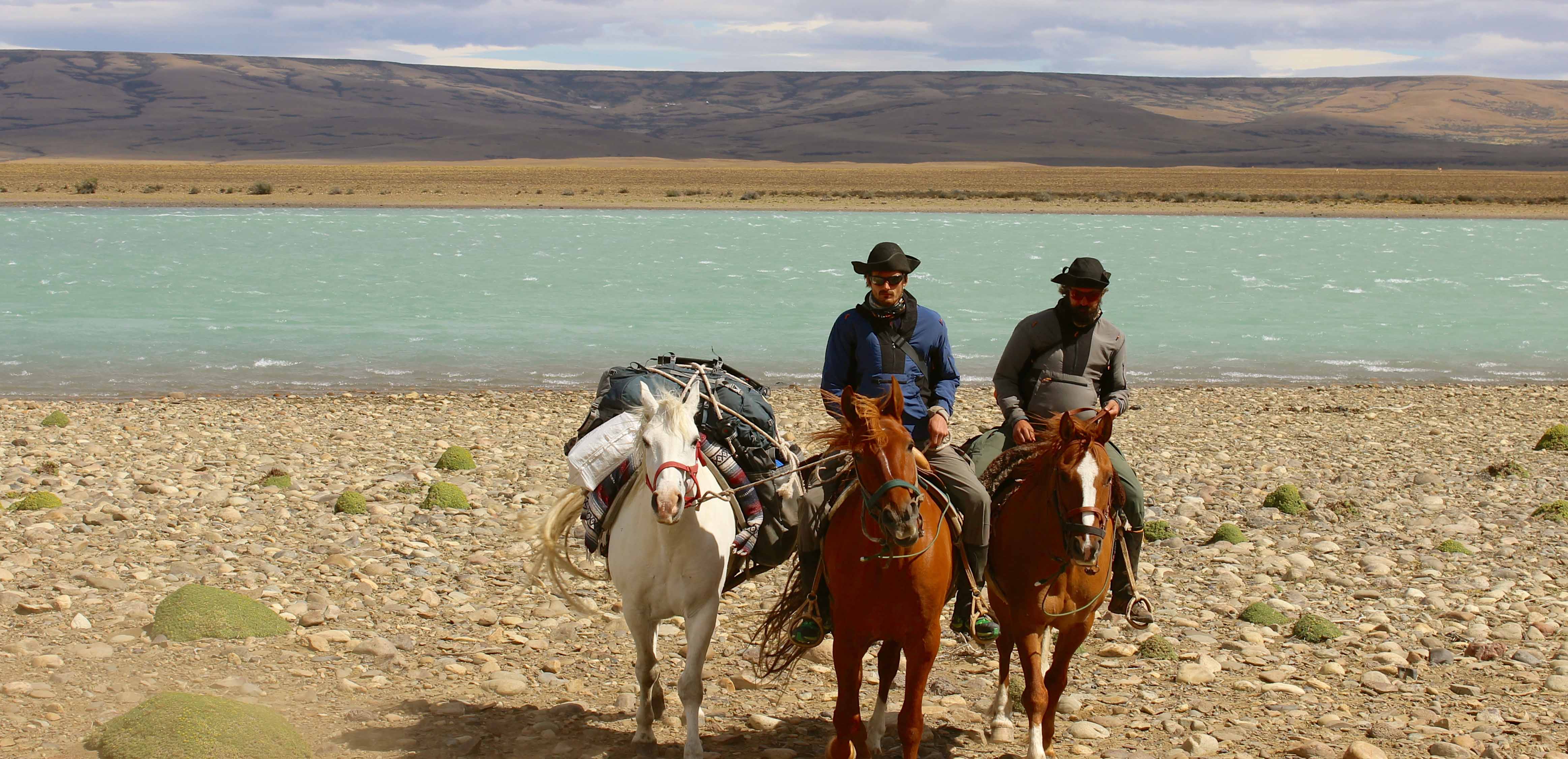
What was the weather like? How did the RailRiders gear fare on the Steppe? What were your favorite pieces and why? It looked windy.
I was a big fan of the Merino Wool. It’s perfect for this type of environment because the temperature really fluctuates quite a lot. It can be really cold in the wind, but if the wind drops and the sun comes out it can get quite warm again. I need something flexible, and that is the great thing about RailRiders gear, and why I’ve been such a big fan of it. On an expedition the two things you need are items that are flexible and items that you can rely on and you guys have got both of those things sorted down to a fine art. The MicroFleece was also the perfect thing to throw on when the wind starts to pick up, it kills some of the windchill and immediately picks up the core temperature. Some days the wind would get up to about 100 mph (category 1 hurricane force). It was pretty hard to stand up some days, only thing we could do was let the horses power ahead and try not to fall off.
More info on Leon's Santa Cruz expedition is available on our blog, or by checking out www.leonmccarron.com.
